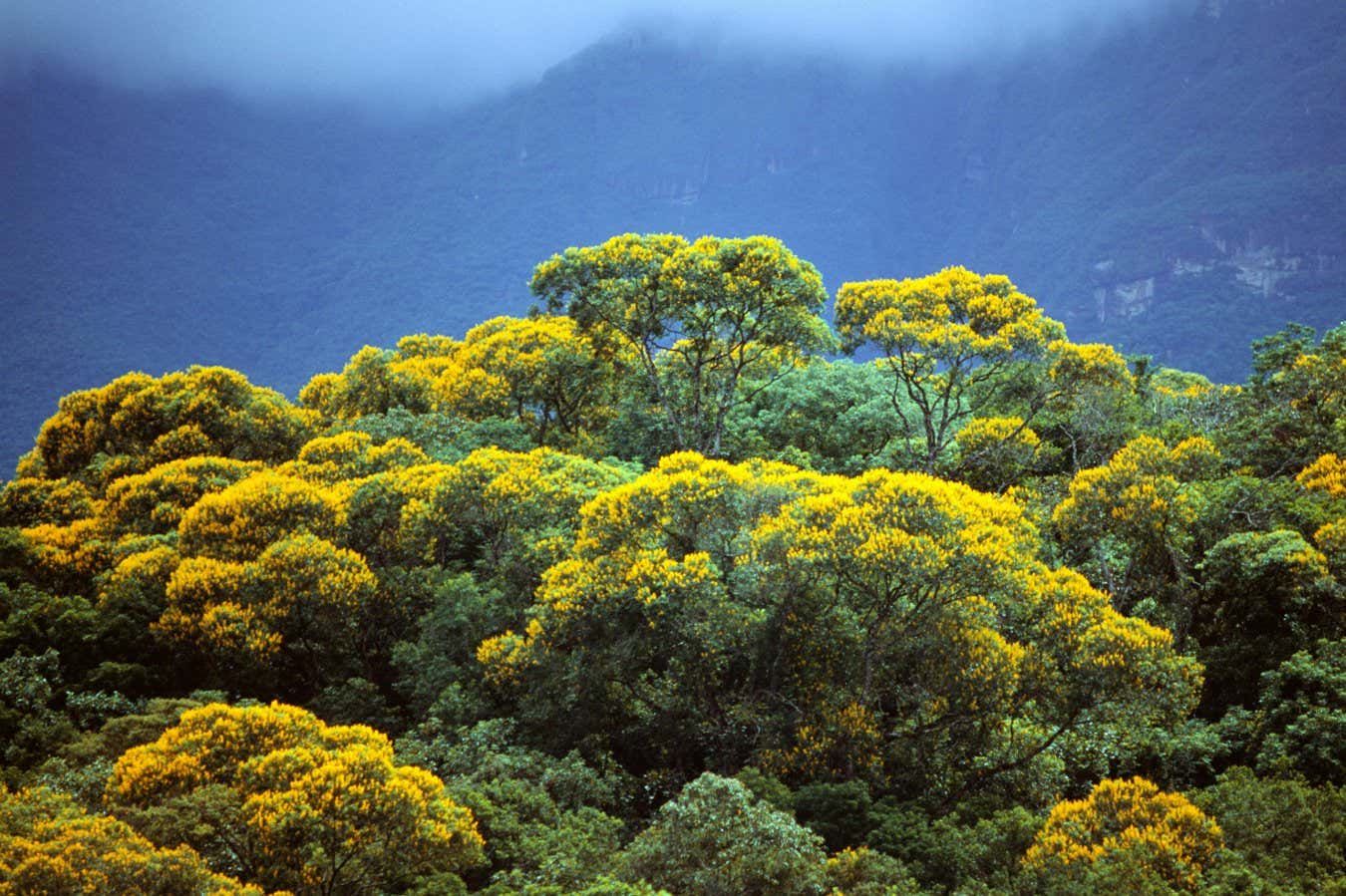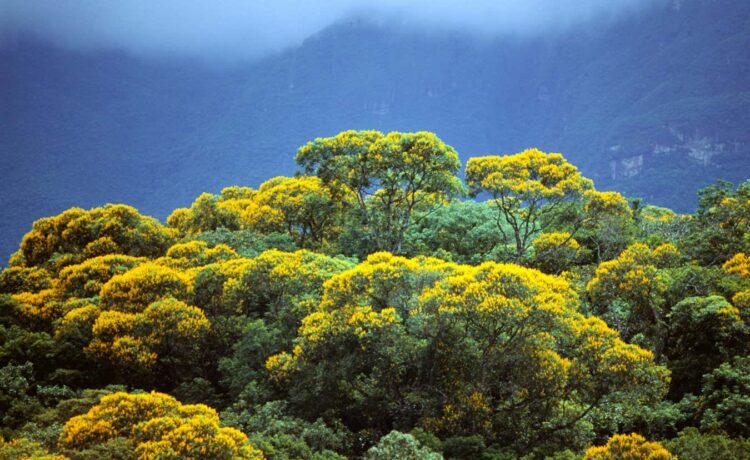
An initiative led by Brazil will pay countries to preserve tropical forests
Luiz Claudio Marigo/Nature Picture Library/Alamy
At the COP30 climate summit in November, a group of countries led by Brazil will launch a bold new initiative that will pay tropical countries to maintain forest cover.
Instead of relying on donations or selling carbon credits, the Tropical Forests Forever Facility (TFFF) will raise money from investments, a radical approach that could generate billions in additional funding for nature, its proponents say.
“We need new ways to raise funds for tropical forests. This is an innovative and exciting fund that could be an essential contribution to supplement grants and donor-based finance – and most importantly, help us move away from carbon trading,” says Kate Dooley at the University of Melbourne, Australia.
The fund is touted as a replacement for carbon markets, which allow companies to offset their emissions by paying to protect forests. Once seen as a promising way to generate funding from private firms, they have been heavily criticised for benefiting businesses more than nature.
A key advantage of the TFFF is its simplicity. Instead of estimating how much carbon a swathe of forest stores and whether it is actually under threat, the scheme would simply pay for any forest canopy that remains intact each year, as measured by satellite monitoring.
“It’s a lot more scalable than carbon markets, as it has a level of simplicity that’s infinitely easier to apply,” says Pedro Moura Costa, an environmental finance expert who was part of the team that approached the Brazilian government with the concept in 2023.
Unlike government donations, which are insufficient and could be halted at any moment, the fund is designed to be self-sustaining.
The project’s architects aim to secure $25 billion in sovereign loans from governments and another $100 billion from private investors. The money will be invested in corporate or sovereign bonds and green energy projects, excluding industries linked to deforestation, which should yield a return of around 7.4 per cent, according to the plans.
After paying a fixed yield to investors, the profit would go directly to tropical countries to protect their forests – for example, by expanding forest protection agencies. Crucially, 20 per cent of the funding must go directly to Indigenous communities, with the TFFF working in partnership with the Global Alliance of Territorial Communities, an organisation representing Indigenous groups.
The fund could generate $4 billion a year – enough to pay countries $4 annually for every hectare of tropical forest they protect. For every hectare lost, $100 would be deducted from a country’s payment. A high disincentive is needed as it takes 100 years to grow primary tropical forest, says Moura.
However, the current proposals define intact forest as having just 20 per cent canopy cover, which could still allow for rampant logging, says Dooley. The fund also plans to use fire as the only metric to monitor degradation, but “fire is often a symptom of degradation, not its cause”, she says.
Some environmental groups and climate finance analysts oppose the concept entirely. Richer countries, they argue, should be handing over cash directly to poorer nations, not putting it in risky investments, says Frédéric Hache at the Green Finance Observatory, a think tank analysing private investment in green solutions.
“We find it problematic that conservation funding is conditional upon future economic growth, interest rates and the skills of the fund manager, which is quite different from a grant and not necessarily what one might have expected of a fund aimed at addressing our critical ecological crises,” says Hache. The 20 per cent promised to Indigenous people “is not generous and fails to reflect their contribution”, he says.
But with donor funding for conservation insufficient and the world’s climate expected to well overshoot the Paris Agreement’s 1.5°C warming goal, advocates say pragmatic alternatives to grants are needed fast.
Signatories of the 2002 Kunming-Montreal Global Biodiversity Framework pledged to deliver $20 billion a year by 2025 for biodiversity conservation in low-income countries, rising to $30 billion by 2030. So far, they have managed $8.2 billion a year on average.
“If we want to promote change at scale, we have to find new, innovative mechanisms where environmental protection pays for itself without having to depend on grants and handouts. Without that, we are going to fail,” says Moura.
“We need a way to pay nature’s stewards to conserve forests,” says Simon Zadek at Morphosis, a climate adaptation consultancy and investment platform. “Some can come from domestic public finance and philanthropy, and some from the sale of nature’s products like nuts and timber. But that’s not enough – so innovative ways to crowd in more funds should be encouraged.”
If the TFFF is able to raise its $125 billion target, it would be the largest single source of funding for forest protection in history. Brazil could be paid more than its entire current environmental budget.
But it all hinges on whether enough capital can be raised in what international specialists say is a particularly challenging moment.
“It’s a tough geo-economic context for ambitious initiatives like this,” says Zadek. “Public balance sheets are stretched and private capital is wary of short- and medium-term volatility.”
Topics:





